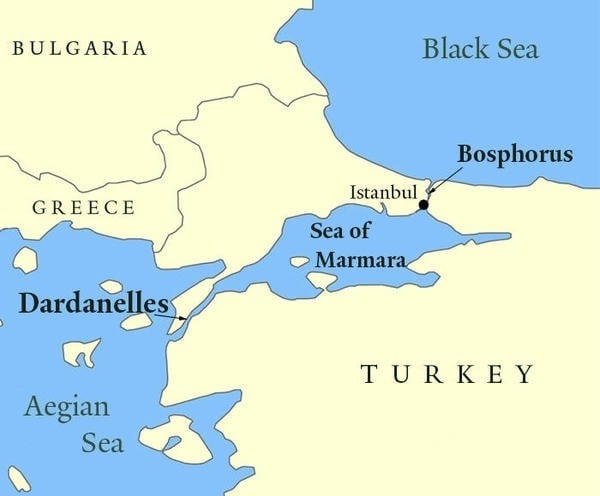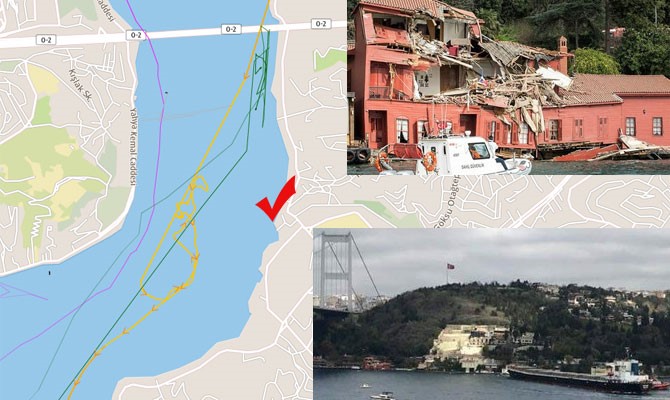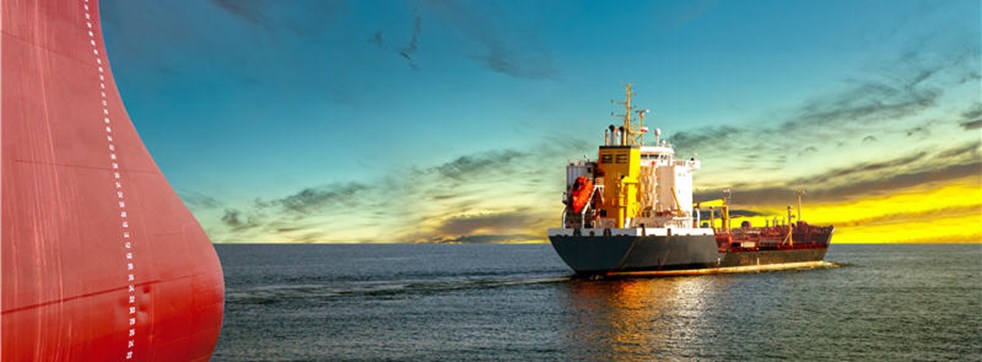Background
The Turkish Straits are among the busiest waterways in the world. They have crucial importance for the international shipping industry especially for trades involving the Black Sea, Sea of Azov (Northeast of Crimean Peninsula), Marmara Sea, Aegean Sea and Mediterranean Sea. The Bosphorus Strait is about 10 nautical miles in length and just 700 meters wide at the narrowest point. It has strong currents and sharp turns. The Dardanelles Strait is about 38 nautical miles long. The passage is generally straightforward, except for two significant turns, near the City of Canakkale where the Strait is narrowest. Please see diagram below showing the locations of the Straits.

Regulatory background
The Montreux Convention (1936) established the general principle of freedom of navigation through the Turkish Straits, for all merchant vessels, by day and night. The Turkish authorities had certain powers to control transit vessels, but pilotage and towage were specifically cited as remaining optional.
Following a series of serious incidents in the Turkish Straits in 1994, Turkey proposed a Traffic Separation Scheme (TSS), which was adopted by IMO in 1995 to improve navigational safety. Turkey also introduced regulations for navigation in the Straits. These were updated by a revision in 1998 and 'New Instructions' in 2002 including, amongst other things, the suspension of all traffic in conditions of poor visibility, the implementation of one-way traffic during the transit of certain types of vessels and the restriction of large vessels carrying hazardous cargo to daylight-only transit.
On 31 December 2003, Turkey implemented a Vessel Traffic Service within the Turkish Straits to further improve navigational safety.
New regulations
The authorities have imposed new changes with effect from 1 September 2018 on the rules governing traffic in the Turkish Straits after an incident in April 2018 involving the m/v "Vita Spirit" which suffered a steering failure while transiting the Bosphorus Strait and contacted the shore heavily damaging a historical mansion (please see image below).

The purpose of the changes was to increase the security of navigation and safety of life, environment and property in and around the Turkish Straits.
New regulations 2018:
- Any vessel with 300 GT (or larger) should have a valid P&I cover for passing the Straits. The previous limit was 500 GT.
- Passenger and container vessels with length overall (LOA) above 300 meters and all vessels with LOA more than 400 meters, need to apply to the Harbour Authorities 10 days before their passage in order to obtain the necessary passage permission.
- The maximum stopover period to maintain her "in transit" status has been increased from 48 hours to 168 hours.
- Salvage operations shall now only be carried out by the relevant port authority ex officio and no time will be granted to the vessel for the salvage by her own means.
- Vessels shall not be permitted to get closer than 100 meters to bridge piers/legs in the Straits.
- Any vessel that has suffered a malfunction/lost technical competence/become unseaworthy before entering the Straits or while passing Marmara Sea, shall immediately notify the Harbour Master and be inspected either by the Harbour Authorities or an approved Class and can continue her voyage only upon obtaining permission from them. If it is deemed necessary, she will be obligated to pass the Straits with the use of pilotage services.
- Rules for passage of the Bosphorus Strait – all tankers and vessels that are carrying dangerous cargo with LOA of 200m and longer, all tows, all vessels subject to the additional passage conditions, all vessels with a LOA of 250m and longer (except tankers and ships carrying dangerous goods) and/or deep draft vessels shall perform their transit through the strait during day time period. Under the new regulations it is highly recommended that such vessels should perform their transit under the assistance of pilots and with the escort of tugboats to be determined by VTS Centre.
- Rules for passage of the Dardanelles Strait – whether full or empty, all tankers with a LOA of 200m and longer, vessels carrying IMDG Code 1 with a LOA of 200m and longer and deep draft vessels shall perform their passages during day time period; all tankers with a LOA of 250m and longer, and vessels carrying dangerous cargo are highly recommended to perform their passage under assistance of pilots and with the escort of tugboats to be determined by VTS Centre.
- LNG and LPG vessels should (a) pass the Straits during daylight (b) be escorted by tugboats with minimum 60 tons bollard pull each and in total no less than 150 tons, whilst traffic from the opposite direction is suspended.
- Vessels are not allowed to overtake another vessel while passing under the three bridges of Turkish Straits and should not come closer than 100 meters to the legs of the bridges.
- Measures have now been introduced that limit the place and duration of meetings with local agents.
Marine pollution penalties
Turkish authorities have increased marine pollution penalties by a factor of three. The club recommends that captains, managers, owners and seafarers take extra diligence and precautions to avoid hefty fines.
Conclusion
At the end of 2018 and early 2019, it was being reported that the new regulations were causing significant delays in the region, particularly for vessels longer than 250m and large tankers. In response to the new regulations the Worldscale Association amended rates for voyages involving transit of the Bosporus Strait. Further it has been reported that delays were reducing the list of vessels able to perform a voyage, thus helping owners' earnings.
Despite the range of new regulations and penalties described in this article, the good news for shipowners is that the Turkish authorities continue to monitor the position and respond to problems.
In March this year it was announced that the Turkish Ministry of Transport were devising measures to smooth traffic flows including allowing tankers to enter the Dardanelles in 6 miles intervals which means one ship every 35 to 40 minutes as opposed to every 60 minutes.
